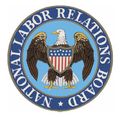After dropping its appeal of a District Court ruling that invalidated its “ambush election” rules, the National Labor Relations Board (NLRB or Board) has proposed those rules again. By a vote of 3-2, the Board reissued proposed amendments to its representation case procedures. The Board states that the amendments are designed to remove unnecessary delays and inefficiencies in representation case procedures. The effect, however, is expected to be an increase in union wins as the union election procedures are streamlined and votes occur quicker.
Board Lacked Quorum When Rules Adopted in 2011
The NLRB first proposed its rules to speed up the union election process in June of 2011. At the time, the Board had just three members as two positions were vacant. Despite an outcry by the business community and receipt of almost 66,000 comments, two of the three Board members voted to adopt the rules. The final rules were published in December of 2011 and went into effect on April 30, 2012.
The U.S. Chamber of Commerce and other interested groups sought to stop the implementation of the ambush election rules by suing the NLRB in federal court in the District of Columbia. Just two weeks after the rules went into effect, the judge in the case invalidated the rules, finding the Board lacked a three-member quorum needed to pass the rules. Although two of the Board members voted in favor of the rules, the third Board member, the sole Republican, did not participate in the vote. Finding that the rules were invalid for lack of the statutorily-mandated quorum, the judge did not need to address the challenge to the rules’ constitutionality and the lack of authority of the NLRB to adopt the rules. In a distinct incident of foreshadowing of this week’s events, the judge specifically stated “nothing appears to prevent a properly constituted quorum of the Board from voting to adopt the rule if it has the desire to do so."
The NLRB appealed the District Court’s decision, asking the U.S. Court of Appeals for the District of Columbia Circuit to reverse the lower court’s ruling. On December 9, 2013, the NLRB withdrew its appeal pursuant to a joint stipulation by the parties. It did so in anticipation of doing exactly what the District Court judge had suggested, namely proposing the rules again so that a properly constituted quorum of the Board can vote to adopt the rules. Board Chairman Mark Gaston Pearce and Board members Kent Y. Hirozawa and Nancy Schiffer approved the re-issuance of the proposed rules.
“Ambush Election” Rules Would Speed Union Election Process
Published in the February 6, 2014 Federal Register, the proposed changes are virtually identical to those proposed in 2011. Highlights of the proposed amendments include:
- A union may file its representation petition electronically, rather than by hand or regular mail.
- A hearing must be held within 7 days of the union filing its petition.
- Employers must provide a comprehensive “statement of position” on the union’s representation petition in advance of the hearing; any issues not included in the statement are waived.
- Pre-election hearing is to determine only whether a question concerning representation exists; issues related to individual voter eligibility may be deferred to post-election procedures.
- The parties right to file a post-hearing brief is discretionary as allowed by the hearing officer.
- Deadline for employer to provide voter eligibility list is shortened from 7 work days to 2 work days from the Direction of Election.
- Employer must provide email addresses and telephone numbers for employees eligible to vote in addition to the required names and home addresses.
- Election need not wait for 25 days after the issuance of a Direction of Election.
- Pre-election appeals to the Board are eliminated, leaving only a discretionary appeal of both pre- and post-election issues after the election occurs.
Two Board Members Dissented
Board members Philip A. Miscimarra and Harry I. Johnson III are not in favor of the proposed rules. Although stating that they share in the majority’s desire to protect and safeguard the rights and obligations of those subject to the National Labor Relations Act, they do not believe it necessary to adopt a “wholesale rewrite” of the Board’s election procedure.
Interested parties and the public may submit comments on the proposed rules until April 7. Electronic comments may be submitted through http://www.regulations.gov. Comments may also be mailed or hand delivered to: Gary Shinners, Executive Secretary, National Labor Relations Board, 1099 14th Street NW., Washington, DC 20570. The Board intends to hold a hearing on the amendments during the week of April 7. We will keep you informed of developments on this issue.






